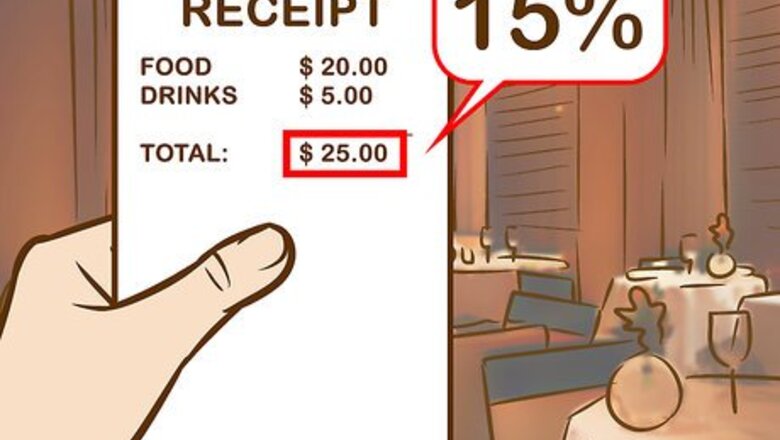
views
- Tip at least 15% of the bill, as a general rule. Consider tipping 20-30% for great service.
- Multiply your total by the decimal percentage of how much you wish to tip.
- Familiarize yourself with local tipping practices if you're traveling outside the U.S.
Tipping the Right Amount
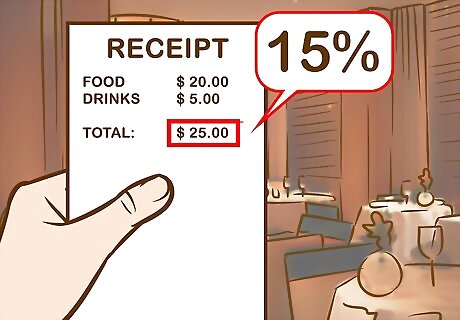
Tip your US server at least 15 percent. The baseline for how much you should tip your server in the United States is at least 15 percent when eating in a restaurant. However, this is generally considered the minimum. If you leave anything less than this, it’s likely the server will be very offended. Be aware that tipping only the basic 15 percent is considered a statement that the service was just average or OK to some servers. Consider tipping more if you thought the service was better than average. Consider tipping 20 percent if the service was good, 25 percent if the service was great, and 30 percent if the service was exceptional. Some people believe you should also tip $2 for each person at the table if that amount is higher than the tip percentage would be.
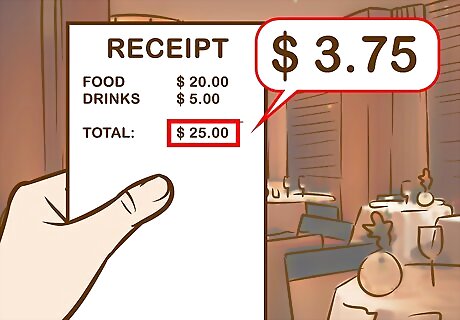
Use math to figure out the tip. Some people struggle to figure out how much 15 percent is exactly. You can use an easy math shortcut to determine the amount you need to leave! To figure out the tip, you will need to do a simple mathematical equation. Some suggest rounding the bill up to the nearest $10 before figuring out the tip on the total. Move the decimal point to the left on your final bill amount. That’s 10 percent. So, if your bill is $55.00, 10 percent is $5.50. To figure out 15%, take half of $5.50 and add it to the $5.50. Thus, 15 percent would be $8.25. To calculate 20 percent, shift the decimal point on your bill amount to the left. Round up. For example, $35.84 would become $3.58. Remember, that’s 10 percent. Then, double the number to get 20 percent.
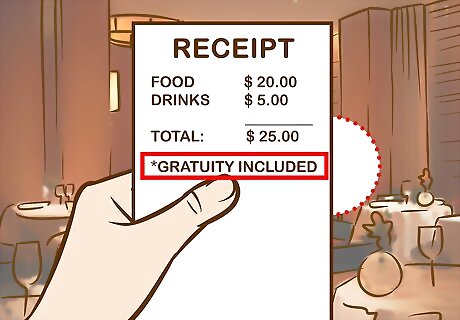
Check whether the tip is already included. There will be some circumstances where the tip will already be factored into your bill. In those cases, you don’t need to tip again. Typically, the gratuity will be 15 or 18 percent when it’s automatically included. Some restaurants have a rule that the tip is automatically included when large groups dine. It will usually say “gratuity included” on your bill or the menu in those cases. This is done because if even one or two people in the group were to skimp on the tip, the server would be unlikely to make the basic amount. Large groups are very time consuming for a server and more work. You should ask in advance or check the menu or restaurant website to see if the gratuity is included.
Mastering Tipping Rules
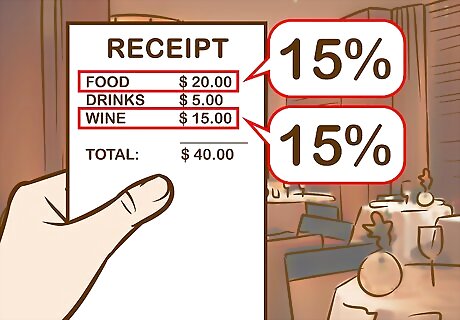
Tip other restaurant staff. If your server is not the only person who’s served you in some way, it’s customary to tip the other staff, too. For example, if you received the benefit of a wine steward, it’s customary to also tip 15 percent the cost of the bottle of wine. You can tip the coatroom attendant about $1 per coat or $2 for the parking valet or garage attendant, if you’ve left your car with them while dining. You can leave a smaller tip to your restaurant server if the food is served buffet style or the server brings you drinks only, but you should still tip between 10 and 15 percent. Some restaurants have washroom attendants; tip them 50 cents to $1. You might want to tip the headwaiter or captain separately also. When buying something over a counter, such as morning coffee, you are generally not expected to tip.
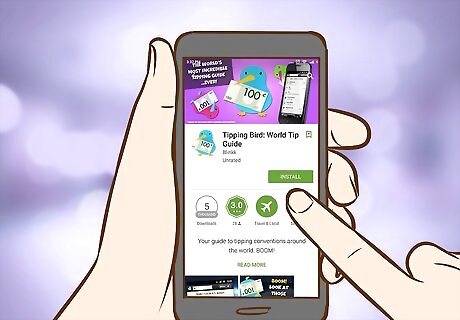
Use a tip generating app. You can download apps to your smart phone that will calculate the tip for you if you plug in the amount of your bill. Most smart phones also come with a calculator, which will allow you to calculate the tip yourself, depending on the amount you decide to leave. Various websites will calculate the tip for you. All you have to do is plug in the amount of your bill, and the percentage amount of the tip you want to leave. In some states, the sales tax is about 5 percent. If that’s the case, you could multiply the sales tax listed on your bill by three in order to get 15 percent. If you used any coupons or discounts, calculate the tip based on how much you would've paid without it. Otherwise, you're punishing the server for the restaurant management's efforts to bring you in the door.

Realize why tipping matters. Many servers absolutely rely on tips to survive. The fact they receive tips is calculated into a lower hourly wage in the first place. It’s not uncommon for servers to make just over $2 an hour before they receive tips. They often make well under minimum wage. Although American states have different minimum wages, the federal minimum wage for tipped restaurant workers is just $2.13. Some servers also are required to share or pool their tips at the end of the night or to contribute their tips to bartenders, lowering their overall haul. You are not legally required to leave a tip, however you’re being very unfair to your server if you do not.
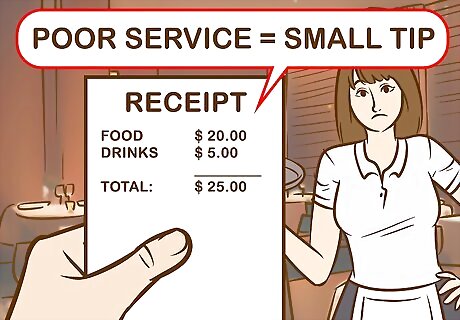
Leave a smaller tip for very poor service. There’s no upside in being a jerk, but if you truly received awful service, you shouldn’t feel obligated to leave a full tip. Try communicating with the server first, though, about what’s making you unhappy to give the server a chance to fix it. A tip to a server is meant to acknowledge good service. If your server ignored you, had a bad attitude, or served your food late, it’s okay to not leave a full tip. Assess how the food matched your order, whether the food was hot and fresh, how attentive the server was, how quickly your empty dishes were removed, and whether the server was courteous. You might want to explain the lack of a tip, in nice and constructive terms, on the bill when you pay the check, though. Some believe you should still give at least 10 percent even if you’ve received poor service. Take care to determine whether the poor service was really the server’s fault. For example, perhaps the kitchen didn’t get the food to the server on time or management understaffed the restaurant.

Tell your server if the service was great. It can make a server’s day to be told you thought their service wasn’t just good but was impeccable. Why not let them know? Write a little note on the bill when you pay your bill explaining what you thought the server did really well. Better yet, call over the manager and tell the manager about the good job the server did. Always treat your server to a smile and be kind and polite. Service jobs can be stressful enough without people taking out their bad days on the server!
Tipping in Other Countries
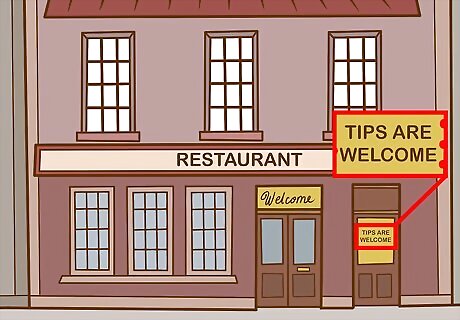
Make sure tips are accepted. In most establishments in the US, tips are not only accepted, but they are encouraged because the servers rely on them to make enough money to survive. In some other countries, tips might be considered insulting or not allowed! There are some venues where tips may not be allowed. For example, some all-inclusive resorts in the Caribbean may discourage tipping because a service fee is already woven into the overall vacation cost. If you are attending a group gathering paid for in advance by someone else, such as a wedding reception, it’s possible that the gratuity was already paid in advance by the person who paid for the event. There’s no harm in leaving an extra tip in a situation like that, though, if you can afford to do so. The server will likely appreciate it.
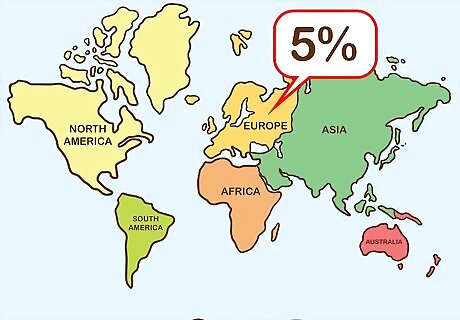
Tip sparingly in Europe. The culture around tipping in Europe is not the same as tipping in the US. Tipping is expected in the US, but in Europe it’s often not expected at all. Start by looking at the restaurant’s menu to see if it lists service as being included. If it’s not, you could leave between 5 and 10 percent. It would be considered a lot and unusual to tip more in some countries. The difference is that servers in Europe are often better paid than they are in the US, meaning they rely on tips far less to survive, and are likely to consider the tip as a small and unexpected bonus. It’s a good idea to hand the tip to the server rather than leaving it on the table. You might see a 12.5 percent optional tip on some menus in London.
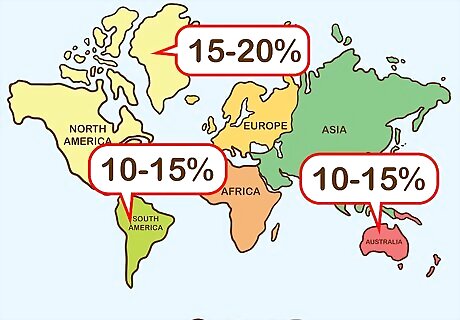
Tip wisely in other areas of the world. Tipping customs vary widely depending on the country you’re visiting. It’s a good idea to research the country’s practices before you embark on your trip. In the Middle East, tipping will be appreciated even in small amounts. Some governments, like Dubai, mandate a 10 percent service charge to bills at restaurants. In Egypt, the tip is often included in the bill but you can add 5-10 percent above that. In Israel and Jordan, the tip is usually included in the bill. Canada is similar to the United States, so tip between 15 and 20 percent there. In some South American countries, like Chile, a 10 percent tip is included in the bill. In Mexico, cash is preferred, and the tip should generally be 10-15 percent. In Australia, leave between 10 to 15 percent.
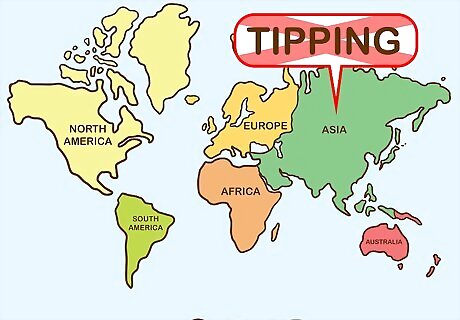
Avoid tipping in most parts of Asia. Some Asian countries may frown on tipping. Check into the local customs, and make sure that tipping is not seen as an insult. China has a no tipping culture, although you could leave a tip in fine hotels and restaurants that cater to foreigners. In Japan, the owner might be insulted by the tip, taking it as a statement by you that they don't pay their servers well enough. In some Asian countries, though, it's OK to tip. In Thailand, leave about $1 for the waiter.



















Comments
0 comment